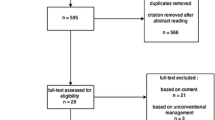Abstract
Background
Postoperative wound infections are a widespread and costly problem, especially in colorectal surgery. Despite their prevalence, there are few data regarding appropriate management and prevention strategies.
Materials and Methods
In order to assess current attitudes and practices about this subject, and as a guide to designing a randomized trial to gather evidence in order to support data-driven protocol development, an e-mail survey was sent to the membership of the American Society of Colorectal Surgeons to assess current attitudes and practices pertaining to prevention and management of wound infections.
Results
Most respondents estimated that the wound infection rate in their own patients was much lower than commonly reported in the literature. Use of evidence-based perioperative strategies for reducing wound infection, such as the use of a wound protector, hyperoxygenation, and implementation of the Surgical Care Improvement Project guidelines, were far from universal. Management strategies varied widely, without apparent rational basis.
Conclusion
Based on the practices and beliefs in the surgical community, it is our hope that a multi-institutional study can be carried out to objectify best practices in both the effective and cost-effective management of this common condition and to reduce the wide variation in the treatment of surgical site infections.



Similar content being viewed by others
References
Bratzler DW, Houck PM, Richards C, Steele L, Dellinger EP, Fry DE, Wright C, Ma A, Carr K, Red L. Use of antimicrobial prophylaxis for major surgery: baseline results from the National Surgical Infection Prevention Project. Arch Surg 2005;140:174-182.
Smith RL, Bohl JK, McElearney ST, Friel CM, Barclay MM, Sawyer RG, Foley EF. Wound infection after elective colorectal resection. Ann Surg 2004;239:599-605.
Horan TC, Gaynes RP, Martone WJ, Jarvis WR, Emori TG. CDC definitions of nosocomial surgical site infections, 1992: a modification of CDC definitions of surgical wound infections. Infect Control Hosp Epidemiol 1992;13:606-608.
Blumetti J, Luu M, Sarosi G, Hartless K, McFarlin J, Parker B, Dineen S, Huerta S, Asolati M, Varela E, Anthony T . Surgical site infections after colorectal surgery: do risk factors vary depending on the type of infection considered? Surgery 2007;142:704-711.
Surgical Care Improvement Project. SCIP guidelines are available at www.medqic.org/scip. Accessed 7 February 2009.
Ueno C, Hunt TK, Hopf HW. Using physiology to improve surgical wound outcomes. Plast Recon Surg 2006;117:59S-71S.
Dryburgh N. Debridement for surgical wounds. Cochrane Database of Systematic Reviews. 2008;(4).
Ubbink D. Topical negative pressure for treating chronic wounds. Cochrane Database of Systematic Reviews. 2009;(4).
Vermeulen H, Ubbink DT, Goossens A, de Vos R, Legemate DA. Dressings and topical agents for surgical wounds healing by secondary intention. Cochrane Database of Systematic Reviews. 2009;(4).
National Institute for Clinical Excellence. Guidance on the use of debriding agents and specialist wound care clinics for difficult to heal surgical wounds October 2008. http://www.nice.org.uk/nicemedia/pdf/CG74.
Hedrick TL, Heckman JA, Smith RL, Sawyer RG, Friel CM, Foley EF. Efficacy of Protocol Implementation on Incidence of Wound Infection in Colorectal Operations. J Am Coll Surg 2007;205:432-438.
Contant CM, Hop WC, van Sant HP, Oostvogel HJ, Smeets HJ, Stassen LP, Neijenhuis PA, Idenburg FJ, Dijkhuis CM, Heres P, van Tets WF, Gerritsen JJ, Weidema WF. Mechanical bowel preparation for elective colorectal surgery: a multicentre randomized trial. Lancet 2007;370:2112-2117.
Guenaga KK, Matos D, Wille-Jorgensen P. Mechanical bowel preparation for elective colorectal surgery. Cochrane Database Syst Rev 2009;1:CD001544.
Sookhai S, Recmond HP, Deasy JM. Impervious wound-edge protector to reduce postoperative wound infection: a randomized, controlled trial. Lancet 1999;353:1585.
Horiuchi T, Tanishema H, Tamagawa K, et al. Randomized, controlled investigation of the anti-infective properties of the Alexis retractor/protector of incision sites. J Trauma 2007;62:212-215
Gallup DC, Gallup DG, Nolan TE, Smith RP, Messing MF, Kline KL. Use of a subcutaneous closed drainage system and antibiotics in obese gynecologic patients. Am J Obstet Gynecol 1996;175:358-361.
Grief R, Akca O, Horn EP, Kurz A, Sessler DI. Supplemental perioperative oxygen to reduce the incidence of surgical-wound infection. NEJM 2000;342:161-167.
Belda FJ, Aguilera L, García de la Asunción J, Alberti J, Vicente R, Ferrándiz L, Rodríguez R, Company R, Sessler DI, Aguilar G, Botello SG, Ortí R; Spanish Reduccion de la Tasa de Infeccion Quirurgica Group. Supplemental perioperative oxygen and the risk of surgical wound infection: a randomized controlled trial. JAMA 2005;294:2035-2042.
National Nosocomial Infections Surveillance (NNIS) report, data summary from October 1986-April 1996, issued May 1996. A report from the National Nosocomial Infections Surveillance (NNIS System). Am J Infect Control 1996;24:380-388.
Gemmell CG, Edwards DI, Fraise AP, Gould FK, Ridgway GL, Warren RE. Guidelines for the prophylaxis and treatment of methicillin-resistant Staphylococcus aureus (MRSA) infections in the UK. J Antimicrob Chemother 2006;57:589-608.
Stevens DL, Bisno AL, Chambers HF, Everett ED, Dellinger P, Goldstein EJ, Gorbach SL, Hirschmann JV, Kaplan EL, Montoya JG, Wade JC; Infectious Diseases Society of America. Practice guidelines for the diagnosis and management of skin and soft-tissue infections. Clin Infect Dis 2005; 41:1373-1406
Braakenberg A, Obdeijn MC, Feitz R, van Rooij IALM, van Griethuysen AJ, Klinkenbijl JHG. The clinical efficacy and cost effectiveness of the vacuum-assisted closure technique in the management of acute and chronic wounds: a randomized controlled trial. Plast Reconstr Surg 2006;118:390-397.
Gregor S, Maegele M, Sauerland S, Krahn JF, Peinemann F, Lange S. Negative pressure wound therapy: a vacuum of evidence? Arch Surg 2008;143:189-196.
Cook DJ, Guyatt GH, Laupacis A, Sackett DL. Rules of evidence and clinical recommendations on the use of antithrombotic agents. Chest 1992;102(4 Suppl):305S–311S.
Author information
Authors and Affiliations
Corresponding author
Additional information
No financial disclosures
Rights and permissions
About this article
Cite this article
Markell, K.W., Hunt, B.M., Charron, P.D. et al. Prophylaxis and Management of Wound Infections after Elective Colorectal Surgery: A Survey of the American Society of Colon and Rectal Surgeons Membership. J Gastrointest Surg 14, 1090–1098 (2010). https://doi.org/10.1007/s11605-010-1218-7
Received:
Accepted:
Published:
Issue Date:
DOI: https://doi.org/10.1007/s11605-010-1218-7




